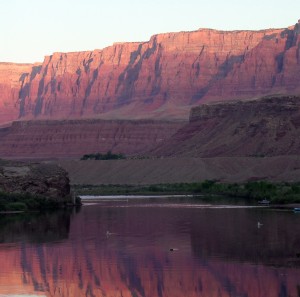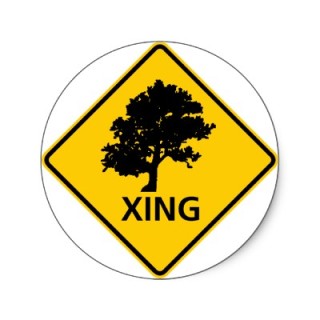Plastic Purge Trailer from Mike SanClements on Vimeo.
Check out Dr. Mike SanClements discuss his efforts to reduce plastic in his life . . . and his new book on the subject!

Plastic Purge Trailer from Mike SanClements on Vimeo.
Check out Dr. Mike SanClements discuss his efforts to reduce plastic in his life . . . and his new book on the subject!

Sunrise on the Colorado River at Lee’s Ferry, Arizona. Photo: L. Reynolds
By Lindsay Reynolds
The Colorado River supplies water to people and ecosystems in 9 western states in the US and Mexico, including almost 5.5 million acres of irrigated lands and nearly 40 million people1. The Colorado, with headwaters in the snowy Rocky Mountains and a path through some of the most arid regions in North America, is one of the most intensively managed river systems in the world. For many years now, research scientists have been warning of impending water shortages in the basin2,3. Last week, the non-profit conservation group American Rivers named the Colorado the most endangered river in the nation. Population growth in combination with limited water and the potential effects of a changing climate are leading down a road to a very dry future. Continue reading

The ant: study species of choice. Photo Credit: Alex Wild
By Jane Zelikova
I love it when things come together. This is exactly what happened to me just the other day. To start at the beginning, I took an Organization for Tropical Studies (OTS) graduate tropical biology course in 2003. It was a great course, I learned a lot, and I made some great friends. While a lot of my memories from the course are a bit murky (many many late nights working on projects, writing papers, and drinking cervesas has put a fog on the course), looking through the course book has brought some things back into focus. Turns out, my personal claim to fame was extreme organismal fidelity. You know those people who always ask a question related to their study organism, even if the subject being discussed is completely unrelated? For example, the seminar might be about jaw bone development in fish and the person I’m talking about asks about plant secondary chemicals …. and receives a blank stare from the speaker. Ok, apparently, the person asking those annoying and distracting questions was me, and my inquiries always (and I mean always!) came back to ants. At the end of the course, we gave each student an award and I got “The Taxonomic Fidelity Award” for my ability to guide any scientific discussion toward ant seed dispersal. That being said, it is not a huge surprise that my ability to turn things back to the ants has stayed with me, despite my scientific departure from the world of ants. Continue reading
Our very own Dr. Kristin Marshall is getting quite a bit of press these days. This past week, she published an article in Proceedings of the Royal Society B: Biological Sciences on the dynamics of riparian ecosystems following wolf re-introduction in Yellowstone National Park. This 10-year study concludes that the story of species interactions within the Park is not as simple as we once thought. Turns out, the beaver plays a crucial role in both willow growth and ecosystem functioning! Check out the ScienceNOW coverage of the story, and read Kristin’s own communication of her research right here.

Tree Crossing. Borrowed from Clint Peters.
Trees on the move?! I know you’re thinking, “Come on, Sarah. Trees can’t move.” And, generally, you would be correct in that statement. Tree species are now, however, in a position where movement may be necessary for survival under changing climatic conditions. How trees will move is under debate within the ecological community, but why trees will move is accepted as a survival strategy related to the adaptation of species. Continue reading
You must be logged in to post a comment.